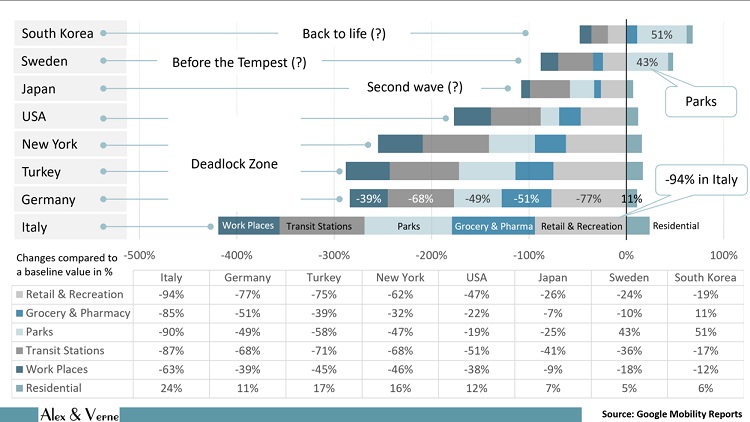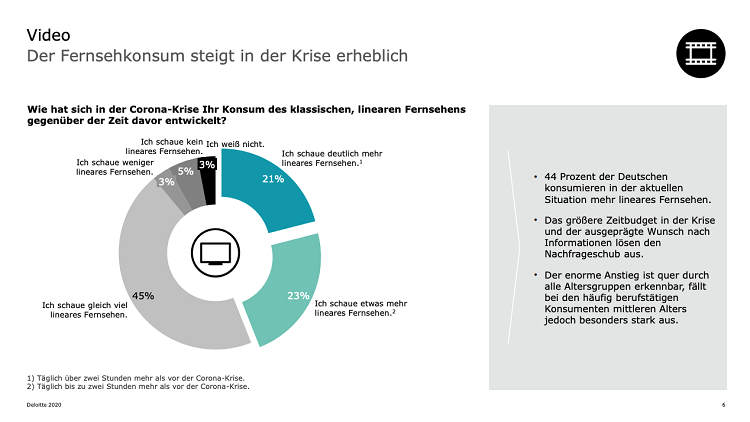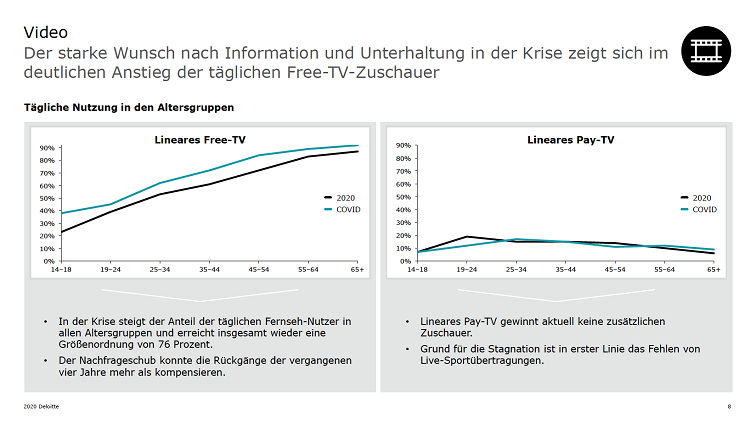 Source: iStock.com/Fokusiert
Source: iStock.com/Fokusiert
Fixed-line telephony rediscovered
9. April 2020 Published by Raphael DoerrIn times where mobility is severely restricted and most of us have to stay at home, more and more people are also resorting to the traditional fixed-line phone – a trend now revealed by the major network operators.
Vodafone reported in its Covid Ticker: +++ April 6, 2020 +++ Network update: Germany is phoning much more – but surfing at a normal level. “The good old phone call is booming in the time of coronavirus: We recorded a 26 percent increase in the fixed-line network last week compared to a normal week […].
In short: Data traffic in our networks is back to around the usual level before the coronavirus outbreak. However, the phone call is experiencing a renaissance. There is a sharp increase in the number of calls with family, friends and colleagues.
And the headline in the German newspaper Bild on March 30 read: “Germany is phoning again. Fixed-line network boom due to the coronavirus crisis.” Since many Germans are working from home at the moment, there is a not only record use of the Internet, but also a boom in phoning over landlines. An analysis by the comparison website Verivox revealed that the number of persons making calls has now risen sharply for the first time in 13 years. Annual usage had been declining steadily since 2007.
And Michael Horn, Head of Service Quality Management at Telefónica Germany’s Network Division, corroborates this trend: “Our customers traditionally use more data over their landline connection at the weekend than on working days. We recorded new records in data transmission in our IP network last Saturday […]. Compared to a normal week, our O2 fixed-line customers are currently making one-and-a-half to two times as many phone calls abroad at peak times. The number of minutes for calls to Spain has doubled, for example. However, countries such as Italy and France have also seen increases of up to 75%.”
This boom is not a new trend, but rather a rediscovery of a good old friend and reliable companion through school, puberty, first love, family crises and more: the telephone.
That was possible because there was a stable telephone network, as it was called back then, and fortunately it still exists to this day. And it seems that the attractiveness of the fixed-line network (to use the correct term for it today) remains unbroken. It may be that the fixed-line network is again the center of interest because a contact ban has been imposed. Instead of meeting up in restaurants or bars, family and friends have suddenly resorted to the phone as a means of communication.
Social distancing
“Please stay at home!” – the appeal by politicians, virologists, health experts and the police to the general public is having an impact and people are indeed staying home. The latest chart created by the strategy expert Dr. Lars Immerthal shows the visits and length of stay at various locations. He has drawn up an overview of selected countries on the basis of anonymized data from Google. The key date for the chart is March 29, which was compared with the median value for the corresponding day of the week in the five-week period from January 3 to February 6, 2020. Every set of mobility data for each country tells a different story about the response to advice to maintain social distancing and current status in relation to coronavirus.

Countries like Italy, the U.S., Turkey or Germany have restricted mobility to a large extent, in particular when it comes to visiting parks or shopping for food. So what do people do when they have to stay at home? They phone or watch TV, but not – as most of us would probably have thought – binge watching (the practice of watching multiple episodes of a series on streaming services), but linear TV, in other words, viewing what happens to be on: Viewers tune in to watch programs that are broadcast at a scheduled time.
Trend toward linear TV
Auditors from Deloitte have investigated the current use of content and information offerings. The results reveal that whereas other sectors are being hit by the coronavirus crisis, the media industry is benefiting short term from an enormous rise in demand for information and entertainment.
- Media libraries are experiencing a boom: The number of daily users has increased by 55 percent.
- Linear TV is back in demand: 44 percent of Germans are currently watching more television.
- Digital channels are preferred: More consumers are paying for online news, while distribution problems for print media are being felt.

“Media are hugely important at the current time,” states Klaus Böhm, Director of Media & Entertainment at Deloitte. “They provide us with important information as well as entertaining content to while away the hours in these difficult times. There is great demand, as our data clearly shows.”
No other media offering has seen such large growth as linear TV, according to the experts in the recent Media Consumer Survey 2020. 21 percent of those surveyed are now watching TV more than two hours a day longer than before the pandemic. A further 23 percent tune in up to two hours more each day. Yet linear TV had waned significantly in popularity before coronavirus: In February 2020, just 67 percent of respondents said they watched TV every day. That figure is now back up to 76 percent. Even young target groups, among whom TV consumption had previously fallen continuously and sharply, are currently rediscovering linear TV. They all watch the same program at the same time, so they can have a really great chat about the latest episode or show. That not only applies to conversations with friends and colleagues the next day, but also on social media.

“There’s not much good news to write about at the moment. But if there’s a winner out of this whole mess, it’s the phone, in other words, telephoning with one line and between two people,” writes the German newspaper Die Zeit. The line is therefore ready and waiting, so all you need to do is decide which phone you want to use to spend carefree hours talking to your faraway nearest and dearest. Our tip: Gigaset phones are ideal – but don’t tell everyone.
 Comments
Comments

 en
en 







